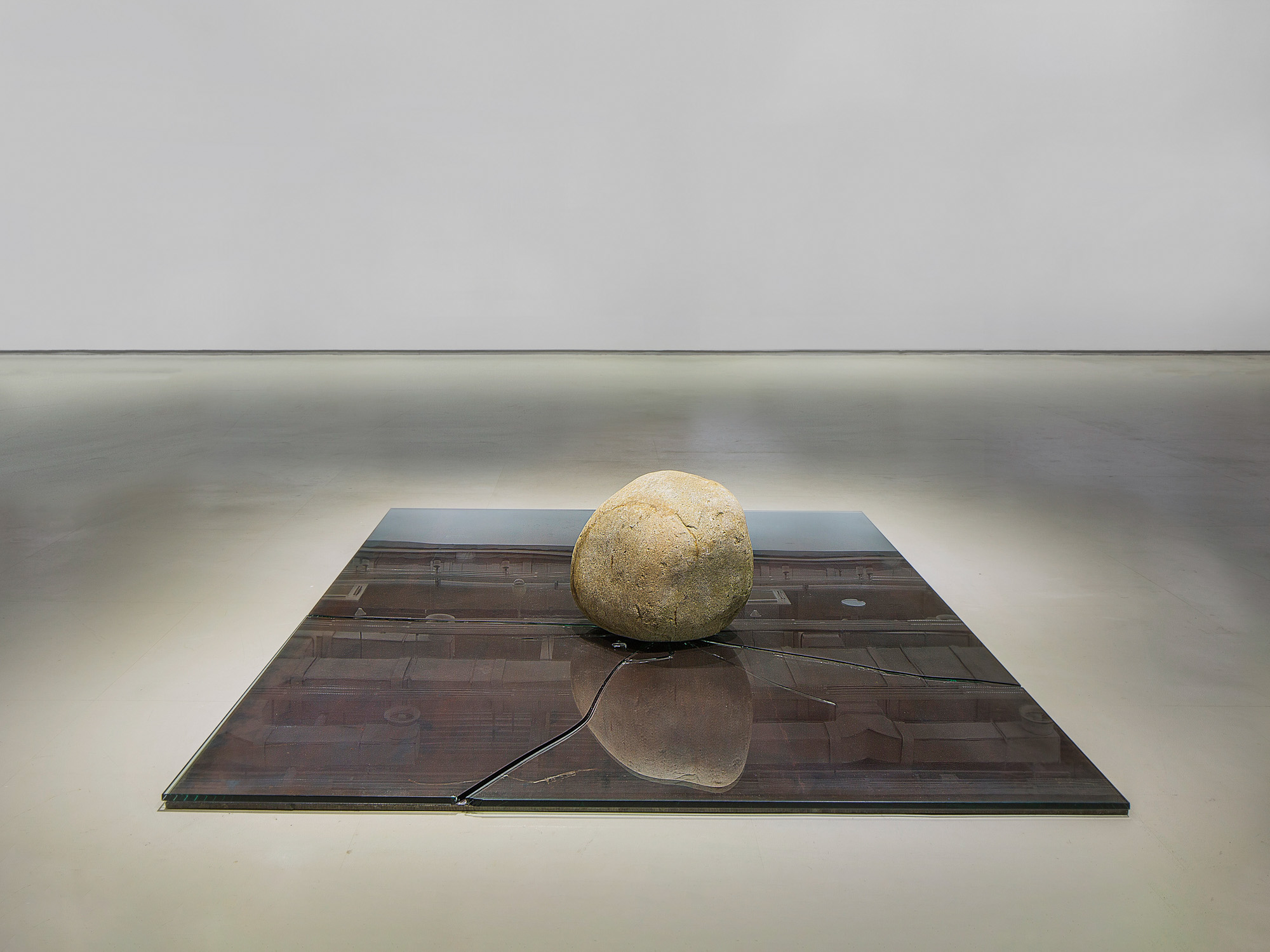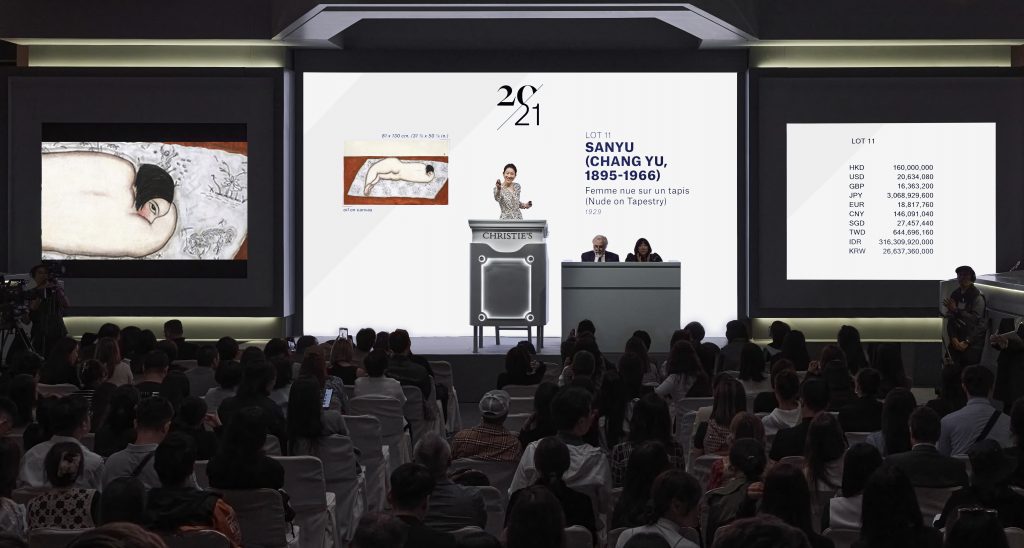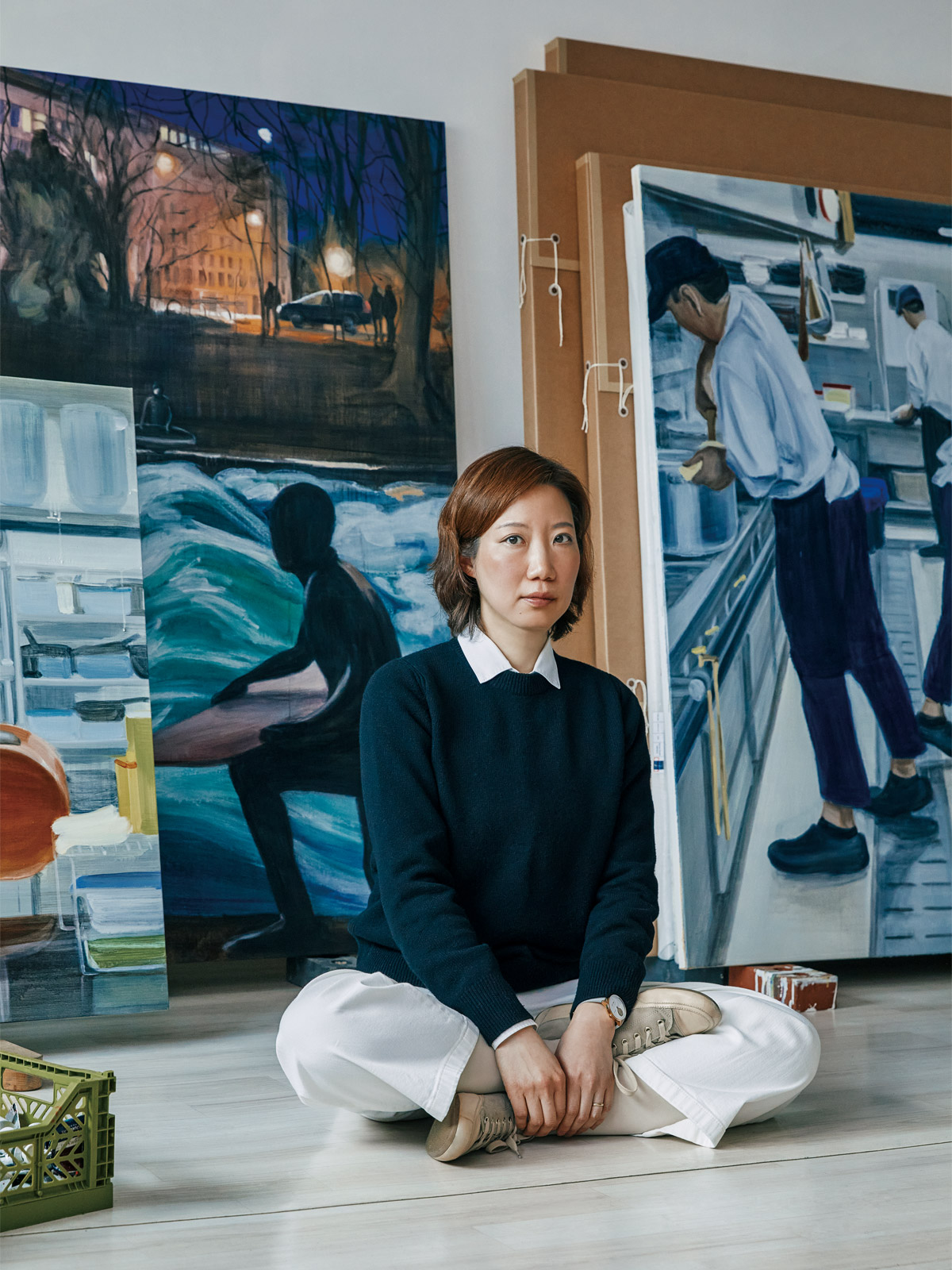 Lee Ufan, ‘Relatum – Mirror Road,’ 2016/2023, Spiegel, Steine, Kiesel © Lee Ufan / VG Bild-Kunst, Bonn 2023. Photo: Shu Nakagawa.
Lee Ufan, ‘Relatum – Mirror Road,’ 2016/2023, Spiegel, Steine, Kiesel © Lee Ufan / VG Bild-Kunst, Bonn 2023. Photo: Shu Nakagawa.Those interested in Korean contemporary art would have heard the name Lee Ufan, the acclaimed South Korean artist. He holds a significant place in the history of contemporary art and is one of the highest-priced artists in South Korea’s art auction market.
A retrospective of the artist is currently on view at Berlin’s National Gallery, known as the Hamburger Bahnhof. This special retrospective, which runs until April 28, 2023, features a collection of 57 of the artist’s works, making it the largest retrospective of his career to date. The retrospective juxtaposes Lee’s works with paintings by Rembrandt Harmenszoon van Rijn (1606–1669), a Baroque painter, to offer a new perspective.
 Lee Ufan, ‘Relatum – Momentum,’ 2019, Steel, glass, and stone, glass and steel. Sheet: 2.1 × 320 × 250 cm, Stone: 63 × 42.1 × 62.1 cm. Copyright Lee Ufan. Courtesy Lisson Gallery, London / New York / Los Angeles / Shanghai / Beijing.
Lee Ufan, ‘Relatum – Momentum,’ 2019, Steel, glass, and stone, glass and steel. Sheet: 2.1 × 320 × 250 cm, Stone: 63 × 42.1 × 62.1 cm. Copyright Lee Ufan. Courtesy Lisson Gallery, London / New York / Los Angeles / Shanghai / Beijing.Lee Ufan is an artist who has made significant contributions to contemporary Korean art, especially in Minimalism and Conceptual Art. He explores various media, including painting, sculpture, and installation art. His works involve arranging simple materials like stones and iron plates to emphasize their inherent characteristics and reveal their interactions with one another.
Lee Ufan is widely recognized for his participation in the Japanese Mono-ha (School of Things) art movement during the late 1960s and early 1970s while living in Japan. Mono-ha artists focused on the relationships between materials and their environments. Artworks were often created by leaving objects untouched and in their natural states. Lee Ufan’s works in this movement often involved simple arrangements of basic materials such as stones and steel plates to emphasize the essential qualities of these materials and their interactions.
Lee’s artistic philosophy centers on “Relatum,” exploring the connections between materials, space, and viewers’ experiences. Lee Ufan’s artistic impact extends beyond his works; he has also significantly contributed to art theory and criticism.
 Lee Ufan, ‘From Line,’ 1974, Oil on canvas, 181.6 × 227 cm. Copyright Lee Ufan and Artist Rights Society, New York. Courtesy Pace Gallery.
Lee Ufan, ‘From Line,’ 1974, Oil on canvas, 181.6 × 227 cm. Copyright Lee Ufan and Artist Rights Society, New York. Courtesy Pace Gallery.Since his first exhibition at Kunsthalle Düsseldorf in 1973, Germany has played a central role in his career. Although he has held several exhibitions in Germany over the years, the Hamburger Bahnhof exhibition marks his return to the heart of contemporary art after nearly two decades. This retrospective is not only a tribute to Lee’s legacy but also an opportunity to reassess his importance in the contemporary art world.





















